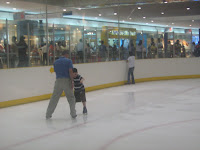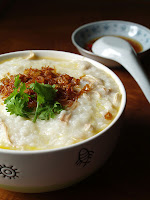An elderly woman with difficulty walking came to our office accompanied by her daughter. I began reading through the woman's chart. She was there to have a preoperative evaluation for electroconvulsive therapy.

There are those who consider ECT to be the equivalent of snake oil, only worse: not merely ineffective, but in fact damaging to the brain, causing permanent
cognitive deficits. But there are others who feel that ECT can be very helpful, even life-saving, for people suffering from intractable depression. In the elderly it is an especially attractive treatment option because of its quicker onset than oral medications and its avoidance of drug interactions. The procedure itself, however, causes great physiologic disturbances and brief but significant stress to the heart. A physically unhealthy person with the right combination of medical illnesses can be vulnerable to heart failure or neurologic effects as a result of the treatment.
As I looked at this woman sitting in her wheelchair and read through her list of medical problems - congestive heart failure, blood pressure issues, an EKG suggesting a compromised blood supply to the heart, and an increased risk of aspiration of stomach contents into the lungs - I began to get a bad feeling. I had just provided anesthesia for a couple of ECTs that morning, and I couldn't imagine this woman's body tolerating the violence of this not-entirely-benign therapy.
I imagined myself injecting the anesthetic into her veins, causing a drop in blood pressure that might put her weak heart over the edge. I imagined myself placing the mask over her face, and trying to ventilate her. It would be difficult, because of her age and weight. Moreover, with her aspiration risk, I'd be crazy to do it that way anyway; she would need a breathing tube. Then I imagined the psychiatrist applying the shock; the intense muscle contractions that would overcome her from head to toe, including her tightly shut eyes and clenched teeth, like a full-body grimace; and the aftermath (even if I were to give her cardiac drugs to try to mitigate the effects):

a sudden increase in heart rate caused by an intense fight-or-flight response, requiring her heart to basically run a marathon despite a decreased blood and oxygen supply because of her heart disease. Not only that, but her heart would have to pump against greater resistance, because her blood pressure would also have shot up to potentially dangerous levels, perhaps 20% higher than her usual.
I started to talk to the woman and her daughter about my concerns. Her daughter bristled immediately and was clearly somewhat irate that I was putting a roadblock between her mother and the treatment for her depression. "She's had this done 7 times at another hospital," protested the daughter. That always makes my job harder - when I try to do my best to protect someone from dangers I foresee, but others have forged ahead anyway.
"You mentioned she was hospitalized for acute heart failure last fall," I said. "That's also part of what concerns me."
"Well, yeah, but she was still able to have one more treatment even
after that," said the daughter, whose tone was sounding increasingly resentful.
I looked at the daughter incredulously. I was not only failing to reach her, to communicate my point - that I had to put her mother's safety first - but also failing to connect the dots for her: that ECT presented significant risks for a patient with severe problems and could be especially dangerous for an unhealthy heart, because it could actually precipitate more problems or worsen existing ones.
Then she came back with the statement that really, really, really irritated me, so much so that I was still thinking about it later that night when my husband and I went to bed. She invoked the name of the psychiatrist at our hospital who had prescribed two more treatments for her mother, saying, "Dr. Plath would NEVER prescribe something if he didn't feel it was safe for her!"
This is going to make me sound like a horrible person, but I really had to summon all my powers of self-restraint and graciousness at that point. I had to resist the impulse to retort, "Oh, yeah? You wanna BET?! Dr. Plath wouldn't even know the first THING about how to keep her safe during and after this."
Of course I didn't say that. Instead I said that Dr. Plath's focus was to treat his patients, but he wasn't an anesthesiologist and might not be entirely aware of the things the anesthesiologists and recovery room nurses would have to deal with after he left the building, which he invariably did immediately after the last shock was administered. We're left to deal with the headaches and muscle aches, the spikes in heart rate, the menacing blood pressure swings - in other words, the physical, moment-to-moment patient care. I was getting the feeling that Dr. Plath discusses little of this with his patients and paints a rosy picture of ECT as categorically safe and benign,
as many major medical centers do.
ECT can be MADE to be fairly safe, but gentle it's not. The FDA has classified devices for delivering ECT in the highest-risk class of medical machinery, Class III. Yet, even the
surgeon general describes the risks of the procedure in relatively bland language. He writes, "There are no absolute medical contraindications to ECT. However, a recent history of myocardial infarct,

irregular cardiac rhythm, or other heart conditions suggests the need for caution due to the risks of general anesthesia and the brief rise in heart rate, blood pressure, and load on the heart that accompany ECT administration."
While I don't think it's right to demonize electroconvulsive therapy as people have in film, fiction, and other media, I think it's important to recognize that along with some very real benefits for certain patients, it carries substantial risk for some, doesn't guarantee recovery from depression, and can on rare occasions be counter-productive. Ernest Hemingway apparently blamed ECT for destroying his memory and thus his career, and of course we all know the tragedy of his life's end.
I am ambivalent about these treatments and participate in them reluctantly, embracing a self-defined role as protector against pain and harmful physiologic effects. It's the role I would want my own anesthesiologist to espouse if I ever felt depressed enough to seek this kind of treatment.
Addendum: As for our elderly patient with the heart problems - I referred her to a cardiologist (she had never seen one before). Her name appeared on the schedule the following week, but she did not appear, so either she hadn't seen the cardiologist yet, or the cardiologist had made other recommendations.
***
In 2001 James Kaufman coined the term "the Sylvia Plath effect" to describe the association between creative writing and mental illness. He writes in his
abstract for a paper on the subject: "Although many studies have demonstrated that creative writers are prone to suffer from mental illness, this relationship has not been truly examined in depth. Is this finding true of all writers? In Study One, 1,629 writers were analyzed for signs of mental illness. Female poets were found to be significantly more likely to suffer from mental illness than female fiction writers or male writers of any type."

His choice of words seems to suggests that writers, specifically female poets, tend to go mad; the writing preexists the mental illness. I actually think it's the other way around. I think the innate brain chemistry preexists and gives rise to the propensity for creative expression as well as for mania and/or depression. Perhaps the neurotransmitter levels and combinations that allow certain individuals to perceive the world and express their perceptions in such extraordinary ways also carry with them the burden of manic, depressive, and/or psychotic thinking.
I am no Sylvia Plath, nor would I EVER want to be. I am quite happy, thank you very much, with my regular little life and regular job and regular family, whom
I consider special beyond measure but who, thank goodness, are regular enough not to be over-the-top special, like the Van Goghs and Mozarts of our society. I am not a WRITER writer. But I remember that there was a time when I took antidepressants for a few months post-partum and found myself not only
unable to write as much but also
uninterested in writing so much. So my dim post-partum view of the world brightened, but I felt the loss of something else that I had loved. All that is years behind me, and I hope it stays that way, but it showed me that there's really some tremendous power in our neurotransmitters, and we need to give our brains the very best care we possibly can.



















.jpg)










.jpg)
.jpg)


.jpg)






















